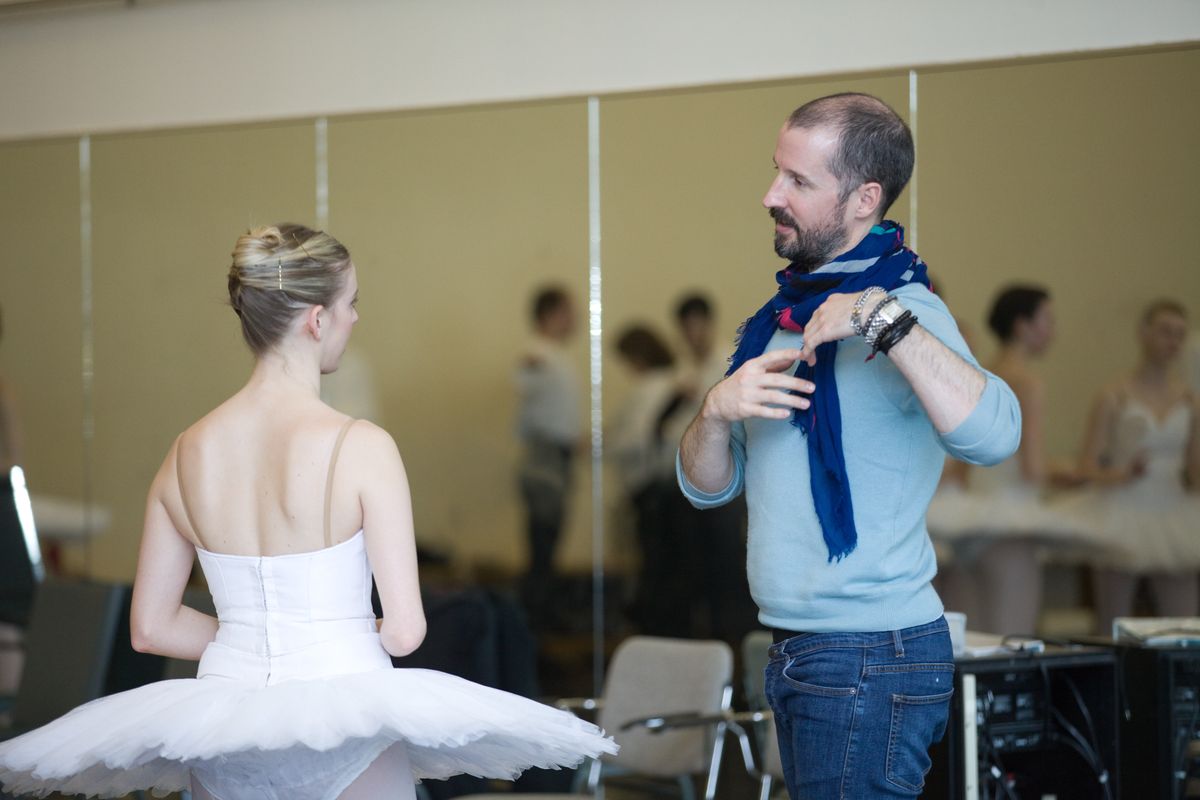Balancing Act: At Louisville Ballet, Robert Curran Pushes the Art Form Forward While Treasuring its Past
This story originally appeared in the December 2015/January 2016 issue of
Pointe.
Last August, Louisville Ballet’s artistic and executive director Robert Curran met with an anonymous donor in New York. He came home with a check for one million dollars. His lips are sealed, but the donation bodes well for the ballet’s future under Curran, whose tenure only began in 2014.
In its nearly 65-year history, Louisville Ballet has experienced quite the evolution: It has transitioned from civic to professional company; is now housed in a spacious facility nestled between downtown and NuLu, the city’s nascent but thriving arts district; and has the nationally respected Adam Hougland as its principal choreographer. As the new director, Curran has already laid out bold plans to strengthen the company, including an expanded relationship with the Louisville Orchestra and a broadened repertoire.
Curran comes to Louisville after a career with The Australian Ballet, where he rose through the ranks to principal. After retiring from the stage, he worked as rehearsal director with Bangarra Dance Theatre (an indigenous Australian contemporary company) before applying to Louisville Ballet when previous artistic director Bruce Simpson announced his retirement. Though he was new to directing, Curran came with a management degree and minors in marketing, psychology and human resources in hand.
 Curran in rehearsal for “Giselle.” Photo by Renata Pavam, Courtesy Louisville Ballet.
Curran in rehearsal for “Giselle.” Photo by Renata Pavam, Courtesy Louisville Ballet.
Last spring, Louisville Ballet presented its first program of work chosen by Curran, including the company premiere of Serge Lifar’s seldom performed Suite en Blanc; George Balanchine’s Square Dance, revived after falling out of the regular rep; and a new contemporary ballet, Lucas Jervies’ What Light Is to Our Eyes. The mix speaks to Curran’s wide-ranging vision. He has frequently said, “This is a ballet company,” but knows that troupes must reach forward and backward in the balletic tradition. He has described this as “a very careful balance between respect and irreverence.”
In person, Curran is a quiet but intense presence. However, company member Natalia Ashikhmina says that it’s in his nature to push. “As soon as you reach the goal that he gave you yesterday, he comes up with the next one,” she says. “I expect a certain level,” says Curran, adding that he doesn’t yell when a dancer disappoints him, but “I am confident in sharing that disappointment.”
Curran has exhibited a knack for simultaneously executing several points of his vision: focusing on the art form’s tradition, new work, sustainability and building connections within the Louisville arts scene. This season’s opener, Curran’s new staging of Coppélia, used traditional choreography in an innovative setting: Louisville’s Germantown neighborhood on the eve of World War I, with the set and backdrops designed by local artist Jacob Heustis.
Curran plans to expand the rep with more 19th- and 20th-century classics, as well as contemporary ballets. As with Coppélia, he’s keen on presenting unique versions of ballets, whether that means fresh designs, settings or other tweaks on classics. He promises Louisville audiences will see works by Balanchine—who had only an occasional presence before Curran’s appointment—every season. Case in point: A full Balanchine program is planned for the spring.
 Curran with Company Dancer Erica De La O in rehearsal for “Giselle.” Photo by Renata Pavam, Courtesy Louisville Ballet.
Curran with Company Dancer Erica De La O in rehearsal for “Giselle.” Photo by Renata Pavam, Courtesy Louisville Ballet.
Curran is equally committed to his dancers. “I want a long-term chance to invest in each of the artists,” he says. “I don’t feel that 12 months is enough time to truly get to know what someone is capable of.” The ballet’s roster backs Curran up; it hasn’t changed since he signed on.
Ashikhmina adds that, in addition to being artistically supportive, the Louisville Ballet has a wonderful emotional environment. “What’s different about the company is this family is really friendly. People care about each other.” Ashikhmina’s husband, Philip Velinov, is also a member, and they have two children. The company also boasts a high number of dancers with college degrees or those who are currently working toward one.
Next up in March is (R)Evolution, a co-production with the Louisville Orchestra. Though the two organizations have consistently teamed up for Nutcracker, they now have the resources to work together throughout the season. The program, a triple bill by Hougland, including his Cold Virtues, a reinvented Petrouchka and a world premiere, hopefully signals more collaborations to come.
Whether the company is presenting classical or contemporary works, Curran is sure of one thing: “I am committed to the glamour of a night at the ballet,” he says, and it all starts with rigor in the studio.
Louisville Ballet At a Glance
Number of Dancers: 23, plus 20 trainees
Length of Contract: 30 weeks
Starting Salary: $400 per week
Performances per year: 4-5 main-stage productions and 2 in-studio productions
Website: louisvilleballet.org
Audition Advice
Louisville Ballet holds open auditions for company and trainee positions every year, usually in February or March. The audition consists of several classes. Curran advices dancers to “show that you are invested, that you have your own goals and objectives. That makes it very clear that you are driven, and it speaks to intelligence. If I can recognize that, I can help. But if someone walks in with a perfect body, perfect technique and an empty head, I don’t even know where to start.”





